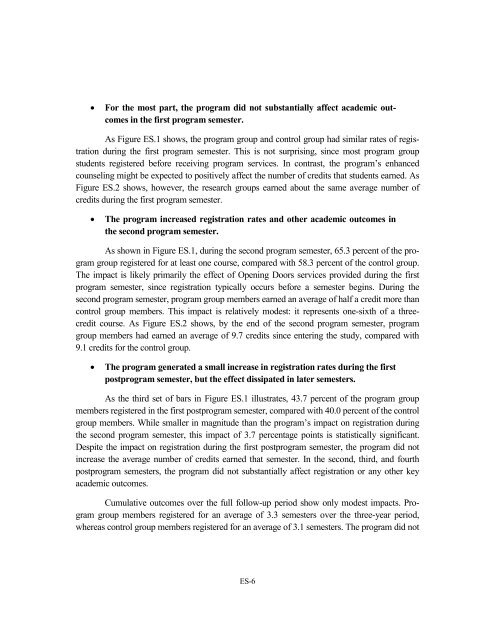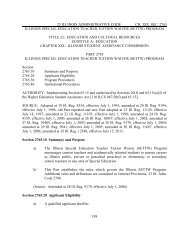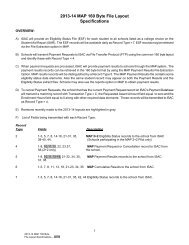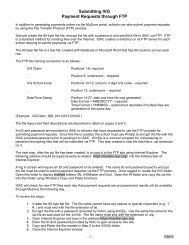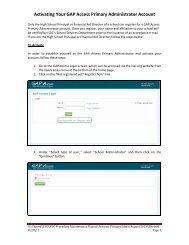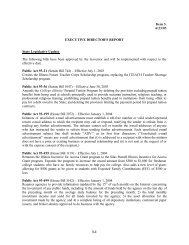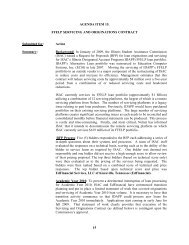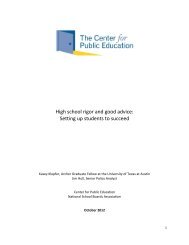MORE GUIDANCE, BETTER RESULTS?
MORE GUIDANCE, BETTER RESULTS?
MORE GUIDANCE, BETTER RESULTS?
You also want an ePaper? Increase the reach of your titles
YUMPU automatically turns print PDFs into web optimized ePapers that Google loves.
• For the most part, the program did not substantially affect academic outcomesin the first program semester.As Figure ES.1 shows, the program group and control group had similar rates of registrationduring the first program semester. This is not surprising, since most program groupstudents registered before receiving program services. In contrast, the program’s enhancedcounseling might be expected to positively affect the number of credits that students earned. AsFigure ES.2 shows, however, the research groups earned about the same average number ofcredits during the first program semester.• The program increased registration rates and other academic outcomes inthe second program semester.As shown in Figure ES.1, during the second program semester, 65.3 percent of the programgroup registered for at least one course, compared with 58.3 percent of the control group.The impact is likely primarily the effect of Opening Doors services provided during the firstprogram semester, since registration typically occurs before a semester begins. During thesecond program semester, program group members earned an average of half a credit more thancontrol group members. This impact is relatively modest: it represents one-sixth of a threecreditcourse. As Figure ES.2 shows, by the end of the second program semester, programgroup members had earned an average of 9.7 credits since entering the study, compared with9.1 credits for the control group.• The program generated a small increase in registration rates during the firstpostprogram semester, but the effect dissipated in later semesters.As the third set of bars in Figure ES.1 illustrates, 43.7 percent of the program groupmembers registered in the first postprogram semester, compared with 40.0 percent of the controlgroup members. While smaller in magnitude than the program’s impact on registration duringthe second program semester, this impact of 3.7 percentage points is statistically significant.Despite the impact on registration during the first postprogram semester, the program did notincrease the average number of credits earned that semester. In the second, third, and fourthpostprogram semesters, the program did not substantially affect registration or any other keyacademic outcomes.Cumulative outcomes over the full follow-up period show only modest impacts. Programgroup members registered for an average of 3.3 semesters over the three-year period,whereas control group members registered for an average of 3.1 semesters. The program did notES-6


